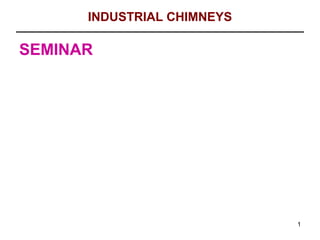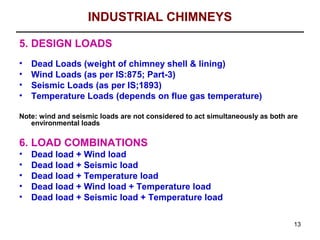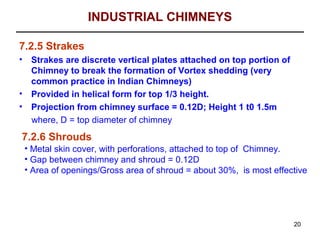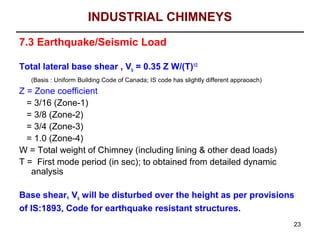The document discusses the design and construction of industrial chimneys. It defines chimneys as tall structures used to discharge flue gases from power plants at a height to ensure pollutants disperse safely. Key points covered include chimney classification, sizing based on factors like exit velocity, design loads from wind, seismic and temperature effects, and construction methods like jump form or slip form construction.













![INDUSTRIAL CHIMNEYS
7. WIND LOADS
• Along wind loads (i.e. in the direction of wind)
• Across wind loads (i.e. Vortex shedding loads)
7.1 Along Wind Loads
• Chimneys are slender structures with aspect ratio
(Height/Diameter) greater than 5. Gust loading as per Cl.8.3 of
IS:875(Part-3) governs
• Gust factor, G = (Peak Load/Mean Load)
• G = 1 + gfr [B(1+x)2 + (SE/b)]1/2
Gf=peak factor (peak value/root mean value)
r = roughness factor (depends on size of structure and ground roughness)
B= Background factor (measure of fluctuating component of wind load)
SE/b = measure of resonant component of fluctuating wind load
S = size reduction factor
E = measure of available energy in the wind
b = structural damping coefficient as a fraction of critical damping (0.016 for RC
structures; 0.2 for bolted steel structures; 0.1 for welded steel structures)
14](https://image.slidesharecdn.com/industrialchimneys-130227093451-phpapp02/85/Industrial-chimneys-14-320.jpg)
















